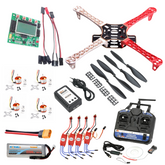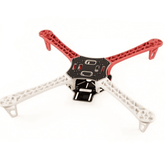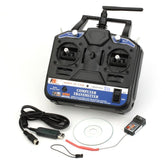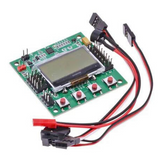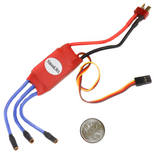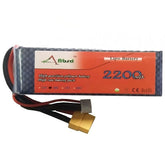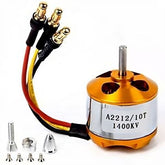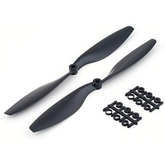How to fly a quadcopter
Summary
Embark on an electrifying journey as we unravel the secrets of quadcopter flight! Our comprehensive blog covers it all – from a captivating introduction to the thrill of advanced flight maneuvers. Delve into the excitement of DIY quadcopter building and ace your pre-flight checklist. Unleash your inner pilot with basic and advanced maneuvers, while troubleshooting and maintenance tips keep you soaring. Don't miss your chance to conquer the skies – read now and take flight like a pro!
Introduction
The popularity of DIY quadcopters amongst hobbyists and professionals alike is growing rapidly. These unmanned aircraft can provide users with an unparalleled level of control, allowing them to make the most out of their flight experience. Whether you are a weekend or professional user looking for aerial footage, transportation solutions or simply entertainment, DIY quadcopters offer both convenience and affordability in one package. With increasing levels of sophistication available at ever-decreasing prices as well as features like intelligent GPS navigation systems; this type of drone technology provides ample reason why it has become such a popular option across so many sectors.
Building and flying your own quadcopter offers several benefits. Firstly, it is a great way to hone your technical skills while also having fun at the same time due to its easy-to-learn design. Secondly, you can take incredible photographs that are almost impossible with other types of drones as they offer better stability in windy conditions; this makes them ideal for aerial photography projects. Lastly, creating one gives you complete control over what components go into it - from batteries and motors to frames and camera mounts – allowing for greater utility.

Getting Started
Understanding the components of a DIY quadcopter is critical for anyone wanting to build and fly their own custom-made drone. All parts must be carefully chosen in order to ensure proper function, flight capabilities, safety, and overall performance. A basic knowledge of motors, batteries, propellers/rotors as well as frames helps users select the right ones needed to build an effective flying machine. Additionally, it’s important that pilots understand how electronic speed controllers work so they can properly wire up all systems correctly when building or maintaining their craft over time. Understanding these components allows quadcopter operators better control over their bee buzzing robots; yielding more enjoyment from aerial exploration!
When it comes to building your own DIY quadcopter, choosing the right components is crucial. As a beginner, you need to understand that selecting quality parts and equipment will be an investment in safety and performance. To get started with this project correctly consider these tips:
- Research each component thoroughly.
- Match all components together by looking at their compatibility specifications
- Opt for high-grade motors which have higher power output capacity compared to cheaper models as they are more durable in long run of usage.
By keeping these points into consideration while shopping around for components you can ensure that your newly built quadcopter flies safely and accurately every time!
This is the perfect DIY Quadcopter Kit for those looking to build their own drone. The kit includes all of the necessary components and tools you need, such as multi-blade propellers, motors, boards, flight controllers and more. With this comprehensive list of parts and equipment in hand novices can construct a reliable quadcopter that will hold up well under regular use. Additionally included are simple instructions on how to assemble your new machine correctly so it performs optimally at every turn - making sure you get maximum enjoyment out of each successful flight!
read more : Where to Buy Drones in India
Building the DIY Quadcopter
As an enthusiast of DIY projects, have you ever wondered how to build your own Quadcopter? Here’s a guide that will show you just how easy and fun it can be!
Building a quadcopter requires some knowledge in three main areas – electronics, aerodynamics and coding. To get started all you need is basic soldering skills as well as basic mechanical engineering abilities. The key components for any successful DIY project are good quality parts - so make sure to source materials from reputable brands with high-quality standards.
Assembling
- Start by assembling the frame which comprises of several carbon fiber rods connected together forming an arm shape structure (similarly what we see on commercial drones).
- Then mount motors onto each end followed up by connecting them using ESC controllers for variable speed control through programming or potentiometer knobs attached at its end(for manual adjustments) .
- For providing navigation our drone needs sensors; commonly gyroscopes/accelerometers used in combination along with GPS module if desired(recommended when venturing outdoors).
- Finally put everything together including Flight Controller Board programmed either manually over USB interface adapter or pre-programmed Autopilot systems.
- One last important thing before powering up includes calibration process wherein zero values must set correctly into onboard controller memory; this makes sure green signal lights even after power cycles preventing accidental midair crashes due failing safety checks.
read more : Working of A Drone

Pre-Flight Checklist
As a DIY quadcopter enthusiast, it's important to always complete your pre-flight checklist before each drone flight. This is the best way to ensure that everything operates correctly and safely on the day of your mission. The following items should be verified during this process:
- Battery level – charging or replacing as necessary
- Motors and propellers condition - inspecting for any signs of damage;
- Camera gimbal state - tightening screws if needed;
- Firmware version check– updating as required in order to guarantee stability & safety parameters are up-to date ;
- Radio transmitter control range test run– verifying optimal signal strength between remote controller & aircraft system throughout entire duration of flight session ;
- General visual inspection around whole body frame including arms, landing gear , legs etc .
- Lastly once all above items have been completed satisfactorily then you can begin launch ! Preforming these steps prior will help make sure every aspect has been double checked so nothing unexpected happens whilst flying that could jeopardize both pilot’s well being and also drone hardware itself giving total peace mind when out there enjoying beautiful moments captured by sky!
read more : Upgrade Your Control: Best Drone Remote Controllers
Basic Flight Maneuvers
As a true innovator of DIY quadcopters, basic flight maneuvers are fundamental to the experience. Whether it’s your first time or you're an experienced flyer looking for something new, mastering these maneuver is essential to perfecting your craft and enjoying this incredible hobby!
- Dive right in with an introduction into proper takeoff techniques which will ensure safe takeoffs each and every time while also minimizing the risk associated motor failure during strenuous activities such as flips and rolls - two staples of flying from both beginner flyers all away up through the seasoned experts!
- Progress onwards delving further into navigating obstacles like trees without damaging either yourself (or objects) by using thoughtful practices such as throttle control & orientation management skills .
- Lastly familiarize yourself even more closely within comprehensive tutorials outlining precise details behind rising above various altitudes , understanding speed capabilities , efficient energy conservation tactics plus many other related topics available online free anytime day or night; providing easy access no matter where you may.
read more : Drone Motor Maintenance: Tips to Keep Your Motors Running
Find out our Drone Motors for various collections.
Advanced Flight Maneuvers
Advanced flight maneuvers make DIY quadcopter-racing and stunts even more exciting. With these advanced techniques, pilots can do everything from sharp turns to powerful flips and rolls!
- Experience smooth transitions between each maneuver thanks to the precise control of a modern multirotor - faster response times mean you can take on trickier challenges as your skills improve over time.
- The acrobatic possibilities are endless with sophisticated rotational speed changes for quick direction shifts, allowing fast loops or banked circles.
- Easy access tuning parameters also give users fine control over their motion; customizing acceleration rates or yaw responsiveness is just a few taps away in some cases!
It’s no wonder why advanced flight makes drones incredibly popular among enthusiasts who want nothing but precision performance that rivals commercial models at an affordable cost. By turning up the excitement factor several notches higher than typical flying modes will ever allow, it won't be long before everyone's looking forward to mastering aerial tricks like never before!
read more : How to build a quadcopter drone at home
Troubleshooting and Maintenance
Troubleshooting and maintenance of quadcopters is an important part of keeping them running smoothly. As a do-it-yourselfer, you can perform many procedures to ensure the safety, reliability, and performance of your drone.
To begin with regular inspections should be conducted every month or so depending on how frequently you are flying it. Inspections will allow for any malfunctions to be caught early before they become serious issues which could put your quadcopter at risk in flight.
- Check the battery charge levels too as faulty batteries can cause problems such as sudden power loss during flight making them potentially dangerous.
- It would also help if spare parts were kept handy since small items like nuts & bolts may get lost while replacing damaged components after crashes etc.
- Furthermore preventive maintenance (lubrication/cleaning) needs to be practiced regularly on moving parts such as motors & propellers themselves because over time wear n tear leads to instability due their missing gearing meshing correctly causing shuddering flights where vibrations play havoc!
- Finally firmware upgrades provide more stability when piloting & keep user experience upsighted by adding new features from manufacturer patches released quarterly -thus providing faster response times without having errors pop out unexpectedly midflight !
read more : Drone Part List
Conclusion
In conclusion, mastering the art of flying a quadcopter is a thrilling journey that blends technical skill with creative freedom. From the initial steps of understanding the components and constructing your DIY quadcopter, to perfecting basic and advanced flight maneuvers, this guide has equipped you with the knowledge you need. Remember, a comprehensive pre-flight checklist and troubleshooting know-how are your allies in ensuring safe and enjoyable flights. So, take to the skies with confidence, explore new heights, and embrace the endless possibilities that quadcopter piloting offers. Embark on your adventure today and let the skies become your canvas of innovation!
If you appreciate our work don't forget to share this post and leave your opinion in the comment box.
Please do check out other blog posts about Popular electronics
Make sure you check out our wide range of products and collections (we offer some exciting deals!)



